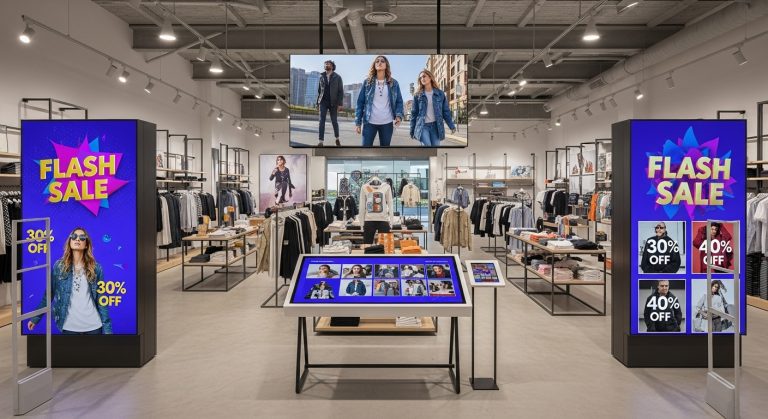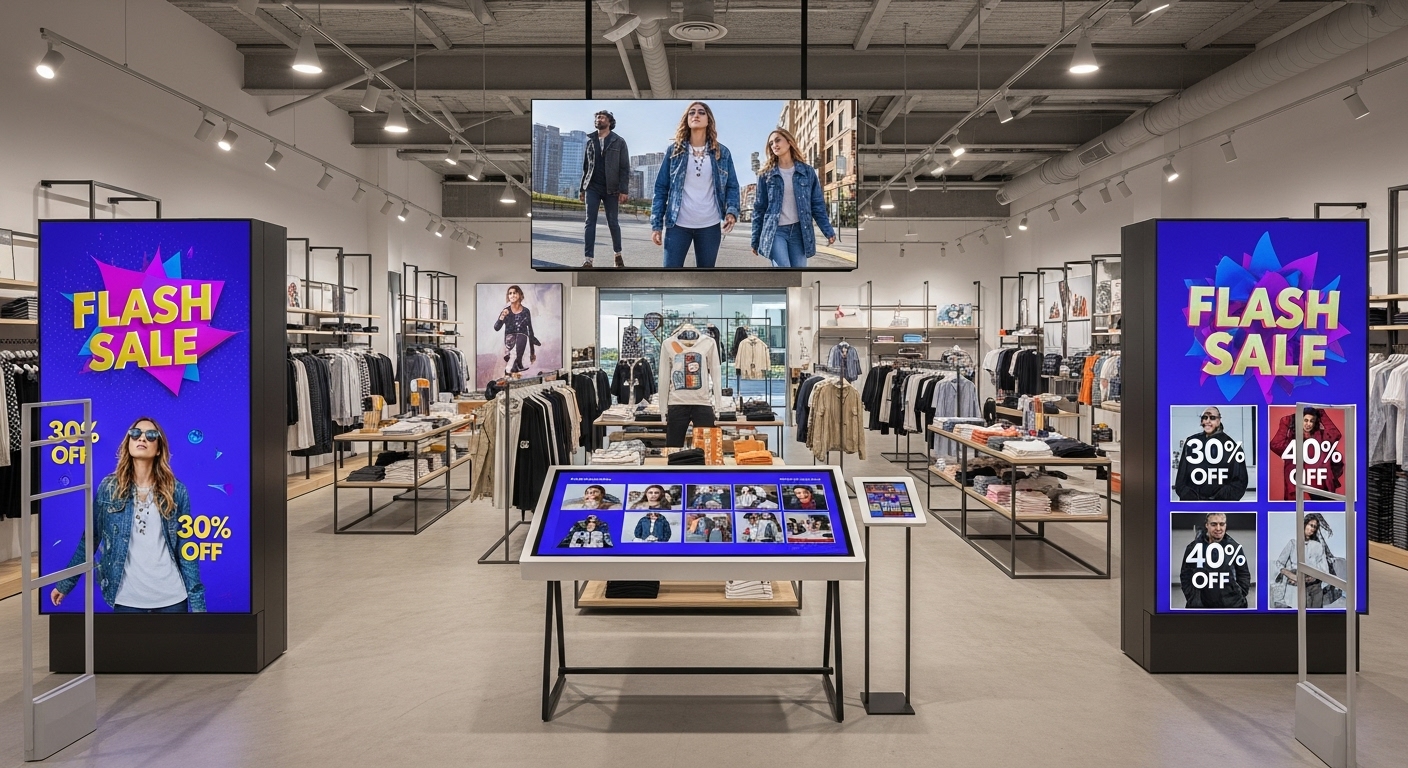
Digital signage is transforming retail advertising. Learn how dynamic displays capture attention, increase sales, and deliver measurable ROI with Scala’s solutions.

In today’s fast-paced shopping environment, digital signage is no longer optional — it’s a core retail advertising strategy. Customers expect dynamic, engaging experiences that traditional posters and print signs simply can’t deliver. From attention-grabbing window displays to interactive kiosks that guide shoppers through product discovery, digital signage for retail advertising gives brands and retailers the power to connect with customers in real time through effective digital signage marketing.
Scala, a global leader in retail digital signage advertising, has decades of experience helping retailers of every size transform the customer journey. In this blog, we’ll explore what digital signage is, the top benefits for retail, and how it improves engagement, drives sales, and provides measurable ROI.
When people ask, “What is digital signage in retail stores?”, the simplest answer is: any digital display used to communicate with and influence shoppers. Unlike static signage, digital signage serves as the foundation for retail media networks — delivering content that’s dynamic, adaptable, and engaging.
Examples of retail digital signage include:
These digital signage examples in retail show how displays drive in-store engagement across sectors. Displays aren’t just screens — they’re powerful in-store advertising tools that drive conversions.
Retailers often ask: “What are the benefits of digital signage in retail?” Here are seven key advantages for display business owners and retail marketers:
Shoppers are bombarded with messages online, on their phones, and in-store. Digital signage stands out by delivering bright, dynamic visuals exactly where and when shoppers make purchase decisions. A digital window display draws them inside, while in-aisle displays spotlight promotions and digital signage and wayfinding tools help guide shoppers where it matters most.
Digital signage isn’t just advertising — it’s storytelling. Retailers can use video walls, branded content, and seasonal campaigns to build emotional connections. Unlike print signage, content can be updated quickly to stay relevant, keeping your brand messaging fresh and compelling.
In grocery store advertising, timing is everything. Digital endcap displays can push seasonal products, recipe pairings, or time-sensitive promotions, encouraging impulse purchases. Across retail, targeted promotions help increase basket size and average transaction value.
Yes … and that’s one of its biggest strengths. Retailers can update content instantly to reflect inventory changes, time-of-day promotions, or flash sales. If one product sells out, simply switch the content to highlight another, reducing waste and ensuring signage always drives value.
Interactive digital signage retail solutions, such as kiosks or touchscreen displays, enable shoppers to explore deeper product information, check stock availability, or even place orders. This level of engagement improves satisfaction while reducing pressure on store staff.
Retailers often ask: “How much does digital signage cost for retail stores?” While upfront costs may be higher than print, digital signage saves money long term by eliminating recurring printing expenses. Add in flexibility, real-time updates, and revenue potential, and digital signage quickly proves more cost-effective than static alternatives.
Yes. Retailers can transform digital displays into retail media networks, offering brands premium advertising space directly in-store. This creates a new revenue stream while delivering contextual, brand-sponsored messages that enhance the shopping experience. In fact, retailers are now evolving these networks into retail media networks.
Looking for digital signage examples retail stores already use? Here are a few:
These examples show how digital signage marketing adapts to any retail vertical, enhancing both customer experience and operational efficiency.
So, is digital signage better than traditional signage? In nearly every case, yes.
Digital signage advantages over print include:
Traditional signage has its place for simple, static communication, but when it comes to engagement, cost savings, and performance measurement, digital signage wins.
Retailers want proof that digital signage works. With Scala and Walkbase analytics, performance measurement is built in.
You can track:
The answer to “how do you measure digital signage performance?” is simple: closed-loop attribution that links content to conversions.
The future of in-store advertising will only make digital signage more powerful. Expect:
As digital signage technology evolves, retailers who adopt early will gain the advantage of richer insights, stronger engagement, and increased sales.
The benefits of digital signage are clear: it captures attention, tells stories, increases sales, and provides measurable ROI. For retailers, it’s no longer about if digital signage should be implemented, but how quickly.
Scala has been helping retailers worldwide deploy, manage, and scale digital signage networks for decades. Whether you’re looking for a digital window display, interactive kiosks, or full retail digital signage advertising solutions, Scala has the expertise to deliver.
Explore Scala’s retail signage solutions today and start transforming your in-store advertising into a measurable driver of sales and engagement.


